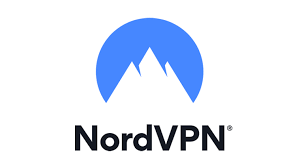- Debunking Myths and Exploring the Reality of Cloud Security
- Understanding Cloud Security
- Roles and Responsibilities
- Security in the Cloud Environment
- Security Tools and Measures
- Mitigating Common Threats
- Benefits of Cloud Adoption
- Best Practices for Cloud Security
- Cloud Security on Different Platforms
- The Path Forward
Debunking Myths and Exploring the Reality of Cloud Security
How Secure is the Cloud? Many people wonder about the safety of their data in the cloud. While some myths suggest that cloud computing is inherently unsafe, the reality is more nuanced. Cloud providers invest heavily in strong security measures to protect user information. As more businesses adopt cloud services, understanding the true security landscape is crucial.

A common belief is that storing data in the cloud leaves it vulnerable to breaches. Yet, most reputable cloud providers offer advanced security features such as encryption, firewalls, and regular security audits. By comparing these facts with common myths, individuals can make informed decisions about their cloud adoption strategies.
Addressing concerns about cloud security can empower users to take advantage of the benefits that come with modern cloud solutions. With the right information, they can confidently choose cloud services that best suit their needs while ensuring their data remains secure.
Understanding Cloud Security

Cloud security refers to the measures and technologies that protect data and systems in cloud computing. It is important to differentiate between common myths and the actual realities of cloud security to ensure proper understanding and implementation of these protections.
Defining Cloud Security
Cloud security involves a set of policies, controls, and technologies designed to protect data stored online and ensure secure access to cloud services. This includes protecting against attacks, data breaches, and unauthorised access.
Key aspects of cloud security include:
- Data encryption: Ensures that data stored in the cloud is unreadable without the right decryption keys.
- Access controls: Manage who can view or use resources in the cloud.
- Compliance: Adhering to legal and regulatory standards related to data protection.
Understanding these elements is crucial for organisations using cloud services.
Cloud Security Myths
Many myths surround cloud security, leading to misconceptions about its effectiveness. One common myth is that cloud services are inherently insecure because data is stored off-site. In reality, many cloud providers invest heavily in security measures.
Another myth is that all cloud services lack proper data protection. In fact, reputable cloud providers offer features like:
- Regular security updates
- Robust firewalls
- Advanced threat detection systems
These features can exceed the security capabilities of many on-premises systems.
Reality of Cloud Security
The reality is that cloud security can be highly effective, provided that organisations take the necessary precautions. While no system is immune to risks, many cloud providers offer strong security measures and guidelines to safeguard data.
Employing best practices such as:
- Regular security audits
- User training for recognising phishing attempts
- Multi-factor authentication
can significantly reduce vulnerabilities. It is important for organisations to actively engage with their cloud providers to understand the security features available and to address any potential security concerns.
Roles and Responsibilities

Understanding roles and responsibilities is key in cloud security. It helps clarify what cloud providers and users need to do to keep data safe.
Shared Responsibility Model
The shared responsibility model is crucial in cloud security. In this model, both cloud providers and users have specific roles.
- Cloud Providers: They secure the infrastructure, including hardware, software, and networking. This includes protecting against data breaches and attacks.
- Users: They are responsible for securing their data and applications. This means managing access controls, data encryption, and monitoring for suspicious activity.
This division helps create a safer cloud environment when both parties know their duties.
Cloud Providers vs Users
Cloud providers and users have different but equally important roles in maintaining security.
Cloud Providers: They manage physical security, network security, and platform updates. Their duty is to ensure the cloud infrastructure is secure and reliable.
Users: Users must configure their applications and manage accounts effectively. This includes using strong passwords and enabling two-factor authentication.
It’s essential for users to understand their responsibilities to ensure data security. By working together, cloud providers and users can enhance security and reduce risks.
Security in the Cloud Environment

Cloud security focuses on how to protect data and manage access in the cloud. It includes data protection strategies, compliance with regulations, and strong encryption.
Data Protection and Compliance
Data protection is crucial in a cloud environment. Cloud providers must comply with various regulations like GDPR and HIPAA. These laws protect personal and sensitive information.
Organisations need to ensure that their cloud provider implements strict data handling policies. This includes how data is stored, accessed, and deleted. Regular audits can help verify compliance with legal requirements.
Data loss can result from cyberattacks or accidental deletions. Backup strategies are essential. They should include regular backups to secure locations. This ensures that data can be restored quickly if needed.
Encryption and Access Management
Encryption is a key security feature in the cloud. It protects data by converting it into a code that is unreadable without the correct key. This prevents unauthorised access during storage and transit.
Access management controls who can access information in the cloud. Role-based access ensures that only authorised users can view sensitive data. Implementing multi-factor authentication adds an extra layer of security.
Each organisation should assess its encryption and access needs. This helps in setting policies that protect data effectively. Regularly reviewing these policies is important to adapt to evolving security threats.
Security Tools and Measures

To protect data in the cloud, various security tools and measures are essential. These include security features, controls, disaster recovery plans, and continuous monitoring. Each tool plays a vital role in ensuring that data remains safe and accessible.
Security Features and Controls
Cloud security includes various features that help protect data. Encryption is a key feature, encoding data so only authorised users can read it. Access controls limit who can see or change information. This includes multi-factor authentication, which adds an extra layer of security by requiring more than just a password.
Firewall protections monitor incoming and outgoing network traffic. They block harmful data and prevent unauthorised access. Security automation tools can manage and respond to threats quickly. Automated alerts notify administrators of suspicious activities, enabling a rapid response to potential breaches.
Implementing these features ensures that data is well protected against various attacks.
Disaster Recovery and Continuous Monitoring
Disaster recovery is crucial for cloud security. It includes strategies for data backup and restoration in case of an incident. Regular backups ensure that information can be recovered without significant downtime. Recovery plans should be tested frequently to ensure effectiveness.
Continuous monitoring involves regularly checking systems for threats. This includes scanning for vulnerabilities and ensuring compliance with security policies. Organisations can use specialised tools to track changes and detect unusual activity.
Both disaster recovery and monitoring work together to maintain data integrity and availability. This combination enhances confidence in cloud security measures.
Mitigating Common Threats

Cloud security involves addressing various threats effectively. Two major areas of concern are data breaches and misconfigurations, as well as counteracting sophisticated attacks that can exploit security gaps.
Dealing with Data Breaches and Misconfiguration
Data breaches can happen due to weak security measures or human error. Misconfigurations are a common issue in cloud environments. For instance, leaving storage buckets open can expose sensitive data.
To mitigate these risks, organisations should implement strict access controls and regular audits. They can use tools that scan for misconfigured settings and provide guidance on best practices.
Key Actions:
- Conduct regular audits
- Implement role-based access control
- Use automated security tools
Training employees is also essential. Staff should be aware of potential risks and trained to follow security protocols. Awareness reduces the chances of unintentional mistakes that lead to data breaches.
Counteracting Sophisticated Attacks
Sophisticated attacks can bypass standard security measures. Hackers may use advanced techniques to exploit security vulnerabilities. This can lead to successful breaches that compromise sensitive information.
Organisations can counteract these threats through various methods. Incorporating threat detection solutions helps to identify unusual activity quickly. Regular security updates are also vital in keeping systems secure.
Key Measures:
- Implement intrusion detection systems
- Perform regular vulnerability assessments
- Keep software and firmware updated
Moreover, creating an incident response plan is crucial. This prepares teams to act swiftly in the event of a breach, minimising damage and recovery time. Staying informed about emerging threats will also aid organisations in adapting their security strategies effectively.
Benefits of Cloud Adoption

Cloud adoption offers key advantages that enhance business efficiency and reduce costs. Two major aspects are scalability and cost savings, along with the role of cloud technology in modern enterprises. These benefits facilitate growth and improve operations.
Scalability and Cost Savings
Cloud solutions provide businesses with exceptional scalability options. Companies can easily adjust their resources based on current needs, ensuring they only pay for what they use. This flexibility helps avoid overinvestment in hardware and infrastructure.
Cost savings are another significant advantage. By moving to the cloud, businesses can reduce expenses linked to maintaining physical servers and IT staff. Operating costs become predictable with subscription-based pricing models. This makes it easier for businesses to plan their budgets effectively.
Cloud Technology in Business
Cloud technology plays a crucial role in how businesses operate today. It enables them to access advanced tools and applications without hefty upfront costs. Solutions like Software as a Service (SaaS) allow companies to integrate popular software easily.
Moreover, cloud-native infrastructure supports agility and innovation. Teams can collaborate in real time, improving project efficiency. Businesses can also deploy updates and new features quickly, keeping them competitive. Embracing cloud technology is essential for growth in today’s digital landscape.
Best Practices for Cloud Security

Cloud security is crucial for protecting sensitive data. Implementing strong measures helps safeguard information from potential threats. Two important strategies include using multi-factor authentication and integrating security management with DevOps.
Implementing Multi-Factor Authentication
Multi-factor authentication (MFA) adds an extra layer of protection. Instead of relying on just a password, MFA requires users to verify their identity through a second method. This may involve a code sent to a mobile device or a fingerprint scan.
Organisations should encourage strong passwords and update them regularly. They should also consider adopting password managers to help users create and store complex passwords safely. Using MFA for secured access to SaaS apps further reduces risk, making it harder for unauthorised users to gain access.
Security Management and DevOps Integration
Integrating security management into the DevOps process enhances cloud security. This approach allows security measures to be built into software development from the start. By doing so, security becomes a continuous focus, rather than an afterthought.
Using automated tools helps monitor security in real-time. Regular audits of services like Amazon S3 buckets are essential to ensure data remains protected. Implementing firewalls is also important to guard network traffic. Overall, effective collaboration between security teams and DevOps leads to safer cloud environments.
Cloud Security on Different Platforms

Different cloud platforms offer various security features and challenges. Understanding these aspects helps users choose the right option for their needs.
Public, Private, and Hybrid Cloud Differences
Public Cloud services, like AWS and Microsoft Azure, provide resources over the internet. These platforms have strong security measures. However, because multiple users share the same infrastructure, vulnerabilities can arise. Data protection in public clouds relies heavily on the cloud service providers (CSPs).
Private Cloud solutions are dedicated to a single organisation. This setup offers more control over security measures. Companies can tailor their security based on specific needs. Though typically more secure, private clouds require significant investment and maintenance.
Hybrid Cloud combines elements of both public and private clouds. This creates flexibility, allowing organisations to choose where to store sensitive data. Security in hybrid systems can be complex. Companies must manage both public and private components effectively to ensure robust protection.
Infrastructure as a Service (IaaS)
IaaS offers cloud computing resources like servers and storage on-demand. This model allows businesses to scale easily. Major CSPs like AWS and Azure provide IaaS with various security tools.
When using IaaS, security is shared between the user and the provider. The CSP typically manages the physical infrastructure. Users must configure their own security settings, including firewalls and access controls.
It is essential for users to understand their responsibilities in IaaS. Regular updates, monitoring usage, and applying strong authentication practices are vital steps. Ensuring data protection in an IaaS environment requires active involvement and vigilance.
The Path Forward

Cloud security is evolving rapidly. As organisations continue cloud migration, they must navigate future trends and enhance visibility and control. These factors are crucial in ensuring a safe and effective cloud environment.
Future Trends in Cloud Security
Anticipated trends will shape cloud security. One significant trend is the shift towards cloud-native security solutions. These tools are designed specifically for the cloud environment, enabling better integration and more effective protection.
Another trend is the adoption of automated security measures. Automation can improve response times to threats, reducing the risk of breaches. This is especially important in environments where software development lifecycle practices are in use.
Furthermore, organisations will increasingly focus on zero-trust architectures. This approach assumes that threats can come from both outside and within. While ensuring that only authorised users can access resources, it secures sensitive data throughout the cloud environment.
Advancing Cloud Visibility and Control
Enhancing cloud visibility is essential for effective cloud security. Organisations are investing in tools that provide real-time insights into activities across their cloud infrastructure. This includes monitoring user activity and analysing data flow.
Control measures will also strengthen security. Companies are implementing comprehensive access controls to ensure users can only access necessary resources. This minimises the risk of data leaks and unauthorised access.
As organisations adopt a multi-cloud strategy, visibility across different platforms becomes critical. Unified management tools can help track security measures and compliance across all cloud environments. By improving visibility and control, organisations can respond to threats more effectively.






